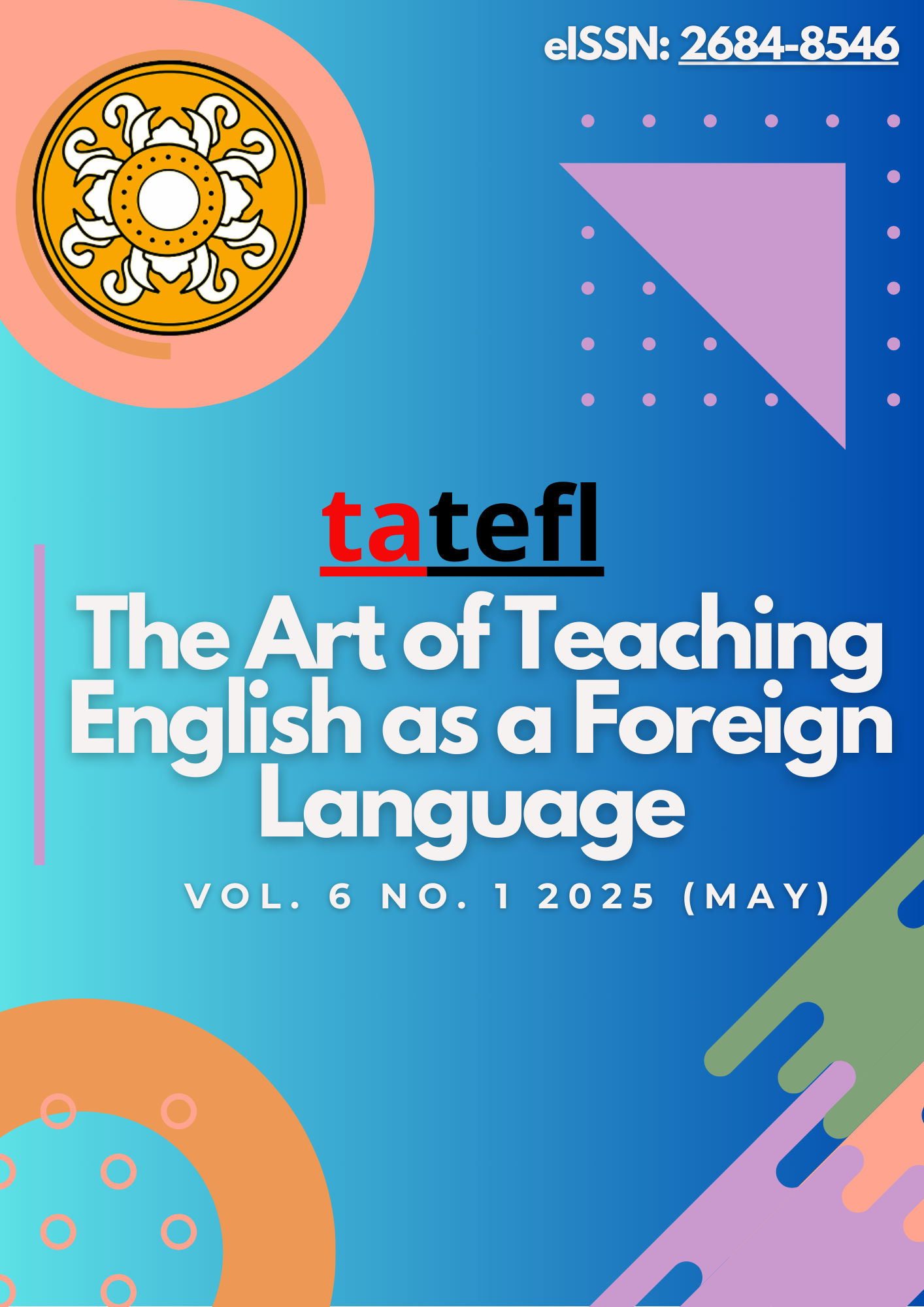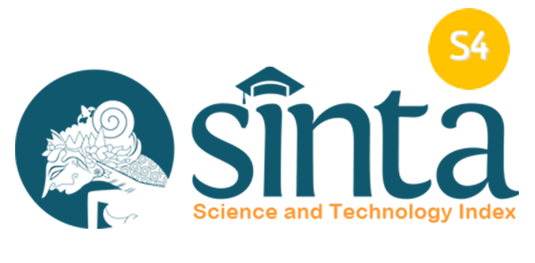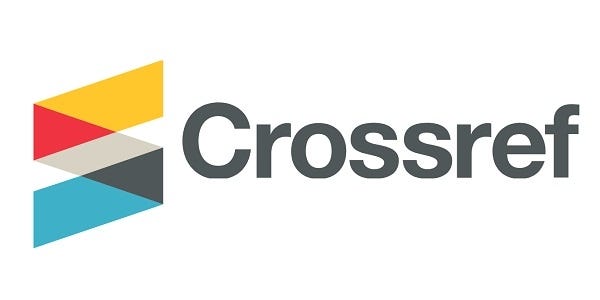Experiential Learning through Artwork Direct Visits in English Classroom for Art Students: An Investigation
DOI:
https://doi.org/10.36663/tatefl.v6i1.960Keywords:
EFL, ELT, Experiential Learning, ArtAbstract
Abstract
Empirical evidence on the integration of experiential learning into English Language Teaching (ELT), particularly within art-based higher education, remains underexplored despite its potential to align language development with students’ disciplinary practice. Thus, this study aims to investigate how undergraduate students majoring in Art Conservation enrolled in a state university specializing in the arts in Yogyakarta, Indonesia, engaged with English language learning through experiential learning (EL) activities, particularly direct visits to public artworks. Drawing on a qualitative case study approach, data were collected from in-depth interviews and student reflective essays, with participants recruited to this current study being purposively selected. Through thematic analysis, the findings reveal how the direct visits to the artworks can enhance the students’ skills useful for their learning in the English classroom and their future professional endeavors. It indicates that direct engagement with artworks in real-life settings significantly enhances students’ learning experiences. These visits supported the development of key academic and professional skills, such as critical thinking, communication, and information retention, by encouraging active observation, personal interpretation, and reflective analysis. The study concludes that experiential learning can provide meaningful opportunities for students to internalize abstract concepts through real-world engagement. Incorporating such activities into language education may foster more profound learning, enhance writing quality, and promote holistic development. These findings underscore the value of integrating experiential methods within higher education settings, particularly art-based majors.
Downloads
References
Ahmed, W., Abdellatif, E., Mohamed, E., & Elkhodary, E. (2020). A critical review on the differences between an art student and a design student in their critical thinking and learning style. Journal of Design Sciences and Applied Arts, 1(2), 88-97. https://doi.org/10.21608/jdsaa.2020.28503.1013 DOI: https://doi.org/10.21608/jdsaa.2020.28503.1013
Akinde, O. A., Harr, D., & Burger, P. (2017). Field experience: Experiential learning as complementary to the conceptual learning for international students in a graduate teacher education program. International Journal of Higher Education, 6(4), 137. https://doi.org/10.5430/ijhe.v6n4p137 DOI: https://doi.org/10.5430/ijhe.v6n4p137
Al Issa, H. E., Thai, M. T. T., & Saad, S. (2025). Empowering social entrepreneurial intentions through experiential learning and self-efficacy. International Journal of Management Education, 23(2). https://doi.org/10.1016/j.ijme.2025.101154 DOI: https://doi.org/10.1016/j.ijme.2025.101154
Anandari, C. L. (2015). Indonesian EFL students’ anxiety in speech production: possible causes and remedy. TEFLIN Journal - A Publication on the Teaching and Learning of English, 26(1), 1. https://doi.org/10.15639/teflinjournal.v26i1/1-16 DOI: https://doi.org/10.15639/teflinjournal.v26i1/1-16
Anaza, E., Mabrey, P., Sato, M., Miller, O., & Thompson, J. (2023). Improving student interview preparation through collaborative multimodal mock-interview assignments. Sport Management Education Journal, 17(2), 164–176. https://doi.org/10.1123/smej.2021-0021 DOI: https://doi.org/10.1123/smej.2021-0021
Bohon, L. L., McKelvey, S., Rhodes, J. A., & Robnolt, V. J. (2017). Training for content teachers of English Language Learners: using experiential learning to improve instruction*. Teacher Development, 21(5), 609–634. https://doi.org/10.1080/13664530.2016.1277256 DOI: https://doi.org/10.1080/13664530.2016.1277256
Braun, V., & Clarke, V. (2006). Using thematic analysis in psychology. Qualitative Research in Psychology, 3(2), 77–101. https://doi.org/10.1191/1478088706qp063oa DOI: https://doi.org/10.1191/1478088706qp063oa
Chan, C. K. Y. (2012). Exploring an experiential learning project through Kolb’s Learning Theory using a qualitative research method. European Journal of Engineering Education, 37(4), 405–415. https://doi.org/10.1080/03043797.2012.706596 DOI: https://doi.org/10.1080/03043797.2012.706596
Chiang, C., Wells, P. K., & Xu, G. (2021). How does experiential learning encourage active learning in auditing education? Journal of Accounting Education, 54. https://doi.org/10.1016/j.jaccedu.2020.100713 DOI: https://doi.org/10.1016/j.jaccedu.2020.100713
Dewey, J. (1986). Experience and education. The Educational Forum, 50(3), 241–252. https://doi.org/10.1080/00131728609335764 DOI: https://doi.org/10.1080/00131728609335764
Gureckis, T. M., & Markant, D. B. (2012). Self-directed learning: A cognitive and computational perspective. Perspectives on Psychological Science, 7(5), 464–481. https://doi.org/10.1177/1745691612454304 DOI: https://doi.org/10.1177/1745691612454304
Harmawati, F. (2024). Voices unheard: teachers’ perspectives on students’ speaking challenges in the classroom. The Art of Teaching English as a Foreign Language (TATEFL), 5(2), 175–185. https://doi.org/10.36663/tatefl.v5i2.895 DOI: https://doi.org/10.36663/tatefl.v5i2.895
Ho, W. W. Y., & Lau, Y. H. Y. (2025). Role of reflective practice and metacognitive awareness in the relationship between experiential learning and positive mirror effects: A serial mediation model. Teaching and Teacher Education, 157. https://doi.org/10.1016/j.tate.2025.104947 DOI: https://doi.org/10.1016/j.tate.2025.104947
Huka, B. R., Basikin, Basikin, B., Ximenes, A. A, Manafe, T. H., Relmasira, M. V., Kawai, S., & Kesaulija, A. L. (2024). Enhancing students’ speaking performance through a day in my life content’ on Tiktok. IJEE (Indonesian Journal of English Education), 11(2), 259-274.
Izzatullakhon, S. (2022). Writing their future: how academic writing skills drive success in studies and careers for bachelor’s students. Eurasian Journal of Academic Research Writing Their Future, 4(11), 110–120. https://doi.org/10.5281/zenodo.14172590
Kiruthiga, E., & Christopher, G. (2022). The impact of affective factors in English speaking skills. Theory and Practice in Language Studies, 12(12), 2478–2485. https://doi.org/10.17507/tpls.1212.02 DOI: https://doi.org/10.17507/tpls.1212.02
Knoll, A. R., Otani, H., Skeel, R. L., & Van Horn, K. R. (2017). Learning style, judgements of learning, and learning of verbal and visual information. British Journal of Psychology, 108(3), 544–563. https://doi.org/10.1111/bjop.12214 DOI: https://doi.org/10.1111/bjop.12214
Kolb, A., & Kolb, D. (2017). Experiential learning theory as a guide for experiential educators in higher education. Experiential Learning & Teaching in Higher Education, 1(1), 7-44. DOI: https://doi.org/10.46787/elthe.v1i1.3362
Kolb, D. A. (2015). Experiential learning: Experience as the source of learning and development. (2nd ed.). Pearson Education, Inc.
Moore, D. T. (2010). Forms and issues in experiential learning. In New Directions for Teaching and Learning (Vol. 2010, Issue 124, pp. 3–13). https://doi.org/10.1002/tl.415 DOI: https://doi.org/10.1002/tl.415
Morris, T. H. (2020). Experiential learning–a systematic review and revision of Kolb’s model. Interactive Learning Environments, 28(8), 1064–1077. https://doi.org/10.1080/10494820.2019.1570279 DOI: https://doi.org/10.1080/10494820.2019.1570279
Othman, N. A. M., Rashid, M. A. A., Ismail, I. R., Aziz, M. F. A., Norizan, S., & Saad, S. A. M. (2021). Predicting preferred learning styles on teaching approaches among gen z visual learner. In Turkish Journal of Computer and Mathematics Education (Vol. 12, Issue 9). https://www.researchgate.net/publication/358633348
Rong-Da Liang, A. (2021). Examining the factors of experiential learning and teaching style: A case study of a hospitality and tourism program. Journal of Hospitality, Leisure, Sport and Tourism Education, 29(May), 100332. https://doi.org/10.1016/j.jhlste.2021.100332 DOI: https://doi.org/10.1016/j.jhlste.2021.100332
Sanchez, N., Norka, A., Corbin, M., & Peters, C. (2019). Use of experiential learning, reflective writing, and metacognition to develop cultural humility among undergraduate students. Journal of Social Work Education, 55(1), 75–88. https://doi.org/10.1080/10437797.2018.1498418 DOI: https://doi.org/10.1080/10437797.2018.1498418
Taylor, S. S., & Statler, M. (2014). Material matters: increasing emotional engagement in learning. Journal of Management Education, 38(4), 586–607. https://doi.org/10.1177/1052562913489976 DOI: https://doi.org/10.1177/1052562913489976
Tseng, J. J. (2025). Using visual scaffolding to enhance the comprehensibility of English materials in science education: A genre-based approach. Journal of English for Academic Purposes, 75, 101500. https://doi.org/10.1016/J.JEAP.2025.101500 DOI: https://doi.org/10.1016/j.jeap.2025.101500
Utami, K. H. D., & Rismadewi, N. W. M. (2024). The implementation of problem-based learning on students’ speaking skills in english for personality development course. The Art of Teaching English as a Foreign Language (TATEFL), 5(1), 77–86. https://doi.org/https://doi.org/10.36663/tatefl.v5i1.703 DOI: https://doi.org/10.36663/tatefl.v5i1.703
Wurdinger, S., & Allison, P. (2017). Faculty perceptions and use of experiential learning in higher education. Journal of E-Learning and Knowledge Society, 13(1).
Xu, X., Yu, H., Gao, X., Shen, B., Feng, W., & Zhou, X. (2022). Understanding an implicated causality: The brain network for processing concessive relations. Brain and Language, 234, 105177. https://doi.org/10.1016/J.BANDL.2022.105177 DOI: https://doi.org/10.1016/j.bandl.2022.105177
Yin, R. K. (2003). Case study research: design and methods (3rd ed.). SAGE Publications Inc.
Zull, J. E. (2006). Key aspects of how the brain learns. New Directions for Adult and Continuing Education, 2006(110), 3–9. https://doi.org/10.1002/ace.213 DOI: https://doi.org/10.1002/ace.213
Downloads
Published
How to Cite
Issue
Section
License
Copyright (c) 2025 Denty Marga Sukma

This work is licensed under a Creative Commons Attribution-ShareAlike 4.0 International License.
License Terms
- Attribution — You must give appropriate credit, provide a link to the license, and indicate if changes were made. You may do so in any reasonable manner, but not in a way that suggests the licensor endorses you or your use.
- ShareAlike — If you remix, transform, or build upon the material, you must distribute your contributions under the same license as the original.
- No additional restrictions — You may not apply legal terms or technological measures that legally restrict others from doing anything the license permits.

















